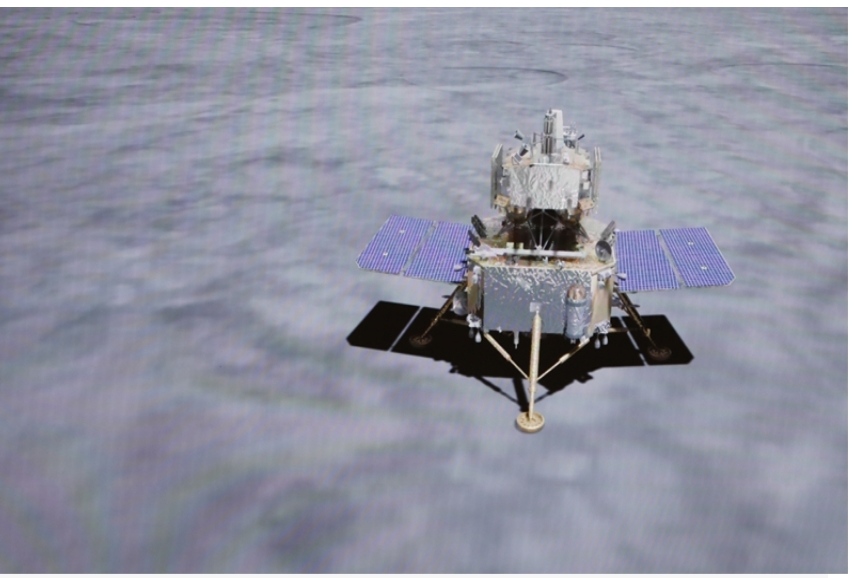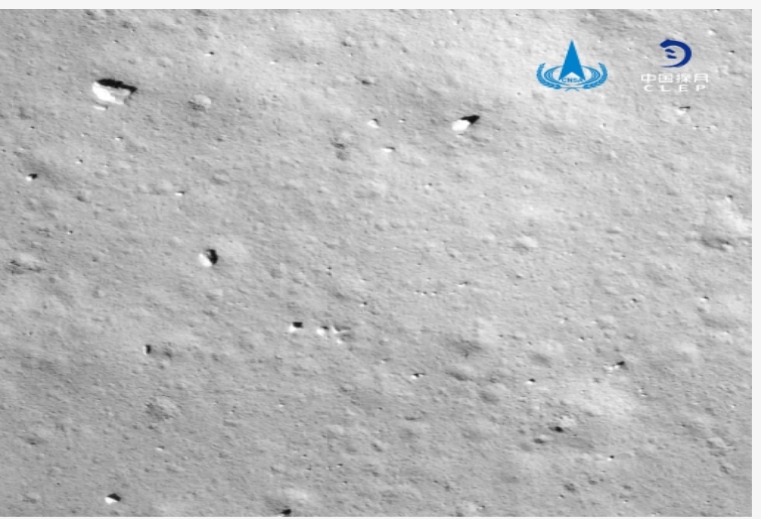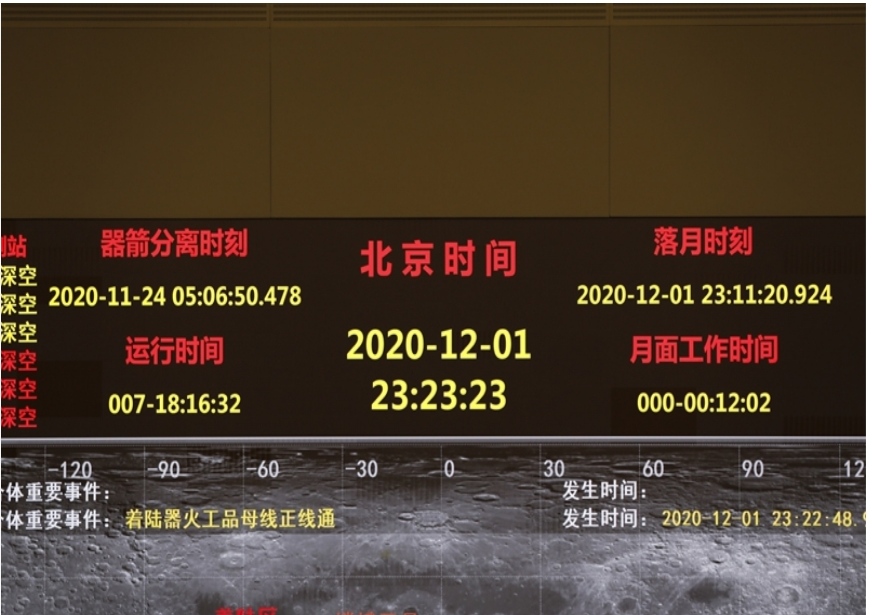Chang’e-5 lands on moon, lays foundation for manned mission

The lander-ascender combination of China’s Chang’e-5 lunar probe has successfully landed on the Mons Rumker area of the huge volcanic plain Oceanus Procellarum, known as the “Ocean of Storms,” on the near side of the moon on Tuesday evening, China’s National Space Administration said.
The CNSA informed that the lunar probe has landed at the planned location on the near side of the moon at around 11:11 pm on Tuesday. The probe sent images of the operation.
The lander-ascender combination of the spacecraft started to decelerate when it was some 15 kilometers above the lunar surface at 10:57 pm on Tuesday. The 7,500-newton thrust-variance engine was successfully activated, reducing the speed from 1.7 kilometers per second to zero.
The camera onboard the lander took a picture of the landing area while executing moon landing.
The smooth soft landing came eight days after China’s latest robotic lunar probe mission started on November 24 with a pre-dawn launch from South China’s Hainan Province.
The development was China’s third successful landing on the Earth’s natural satellite, following a first by the Chang’e-3 probe on December 14, 2013, and a first landing on the far side of the moon by the Chang’e-4 probe on January 2, 2019.
China is now trying its level best to stay ahead in the modern race to the planets and the moon. The powers of the 21st century will be those who will have access to the moon’s resources and position as the gateway to the rest of the solar system, and will own the future. Though every effort has to be made to ensure that entire mankind benefits from these endeavours.

The three soft landings have proven that China h abundant engineering and technological experience, of China’s aerospace research. Success rate for moon so far indicates a highly reliable, mature automatic soft landing technology, including trajectory designs, speed and altitude control techniques, and smart decision-making. Though same has not been the case with respect to Mars mission.
Chinese scientists have learnt a lot from the unmanned missions in the 1970s by the Soviet Union, which suffered several failed attempts in the landing stage, China’s research team has guaranteed the probes’ safety with countless ground simulation experiments and meticulous designs of our scientists, Wang noted.
The landing site, scientists believe, contains rocks and soil that are 3.2 to 4 billion years old. It has never been visited either by a probe or human, and is believed to fill an important gap for scientists to better understand the Moon’s volcanic activities.

The operation will engage in a 48-hour sample collection with a drill and a scoop. As the scoop takes soil on the lunar surface, the drill will dig up to 2 meters with a robotic arm. Together, they will collect around 2 kilograms of lunar material, which will be stored in a container aboard the ascent vehicle.
Chinese researchers have designed an advanced grabbing system to ensure a smooth sample collection procedure. They have strengthened the drilling and dust-cleaning abilities that are highly adaptable to lunar soil, and improved the stability of the drilling tube by protecting it with an outer layer.
The improved drilling system has realized a 70 percent success rate for the collection of integral samples, mission developer China Aerospace Science and Technology Corporation told the Global Times.
“Sample collection on a celestial body normally combines the scoop and the drill, since the materials on the surface are usually too complicated to analyze because of all kinds of space weathering effects, and it is the soil and rocks underground that are most valuable for studying,” Wang Yanan explained.
The tubular samples which will be taken from up to 2 meters deep could provide a great amount of geological data, allowing further studies on the material’s content, causes, and time of formation.
Even more challenging, following the soft landing, the probe’s ascender will take off from the moon surface, a first in China’s aerospace history. It will later rendezvous and dock with the orbital module at the lunar orbit some 380,000 kilometers away from Earth, which has never been done before. The re-entry capsule will then return the lunar material to the preset landing site in North China’s Inner Mongolia Autonomous Region for further study and research.
Song believes that the moon surface launch stage and the ascender’s rendezvous and docking with the orbital module, a unprecedented challenge in the Chang’e lunar probe series, would be more exciting, and if successful, the significance of the mission would be no less than an unscrewed Apollo mission, once the name card of human lunar exploration activities during the Cold War.
“The moon surface launch and return would lay a technological foundation, and verify the viability of manned lunar landing missions, and even the building of a lunar research base,” observers said.
Though it has laid a solid foundation for future manned space tasks, observers stressed that there is still a long way to go. Manned missions will have a much heavier payload, and a more complex system equipped with life supplies such as a suitable temperature, pressure level, and oxygen, which will pose a great challenge to the spacecraft’s soft landing.



